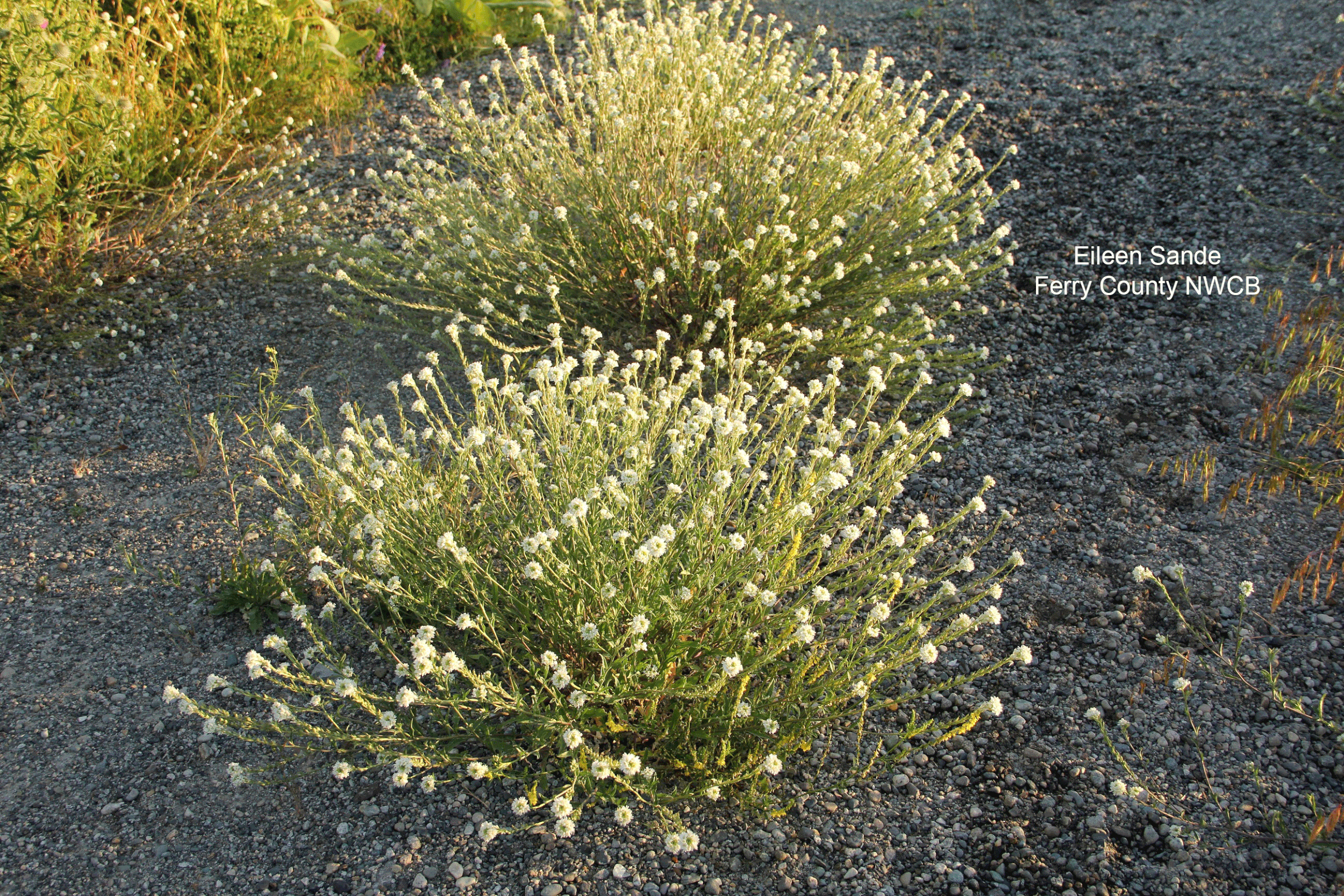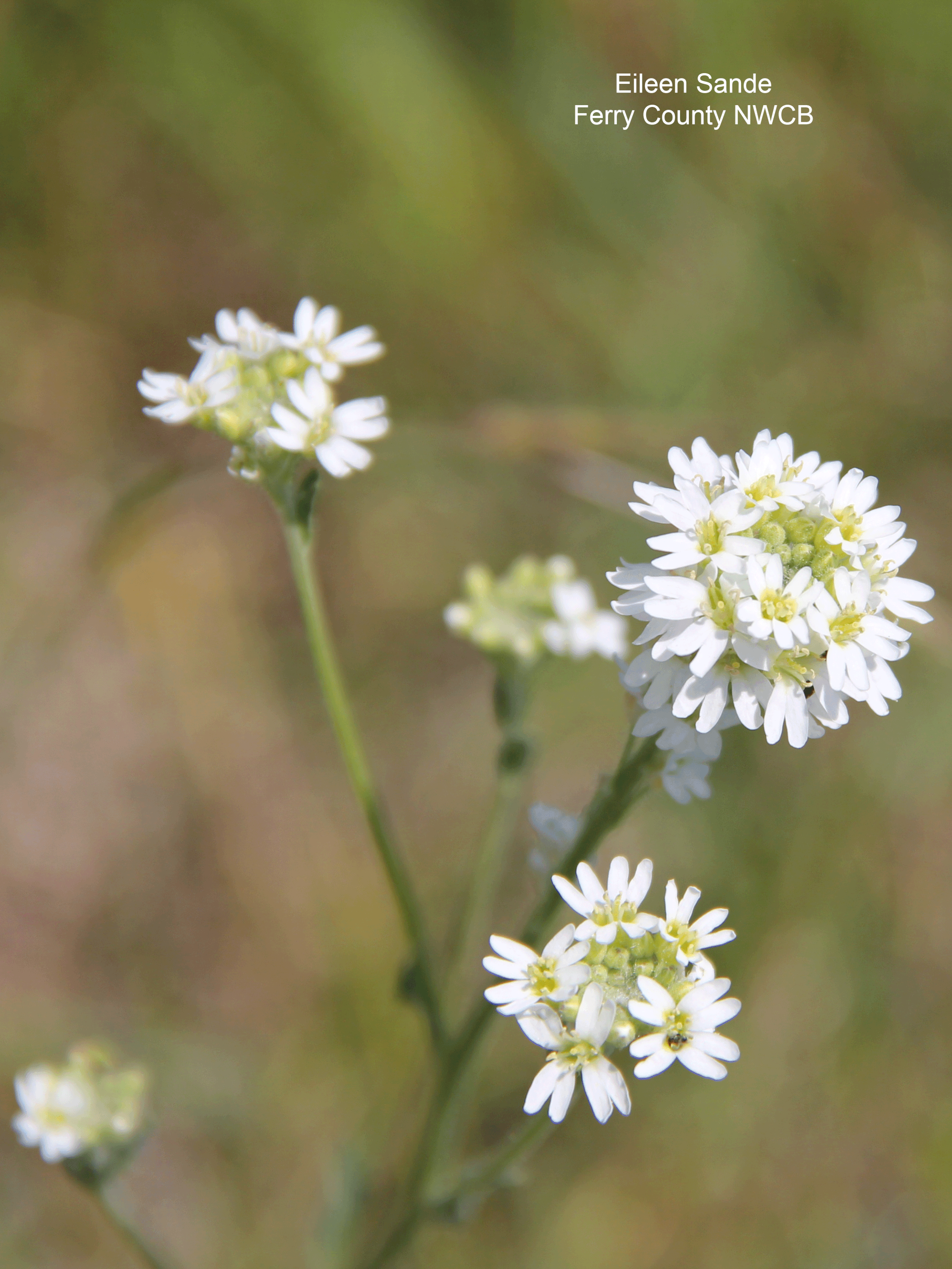Step 1. Correctly identify your plant.
Tap rooted, multiple stems common, member of the mustard family, usually less than 2.5 ft tall, can be toxic to horses in large quantities.
Leaves are alternately arranged, covered in tiny star-shaped hairs (visible with magnifying glass), generally point upward, margins entire (smooth to slightly wavy).
White flowers with 4 notched petals, 4 sepals, and 6 stamens – 2 short, 4 long (characteristic of mustard family).
Photo Credit: Eileen Sande, Ferry County NWCB, and https://www.nwcb.wa.gov/
Step 2. Choose your method.
Hand pulling is the preferred method. Grass will soon become the dominant species growing tall enough to shade out the hoary alyssum. Seed any bare areas with native seed.
Mowing is not recommended and may increase the infestation as cutting down shading grass will give hoary alyssum the advantage. For large patches organic burndown herbicide can be used.
Step 3. Repeat.
Hoary alyssum does not compete well with mature vegetation, it needs open areas and lots of sunlight. Competing vegetation can greatly reduce seed production of Hoary Alyssum. Continue to monitor the area for Hoary alyssum and seed native grasses and forbs that will help shade out Hoary alyssum.
To learn more about the biology of Hoary alyssum visit the web page below.



